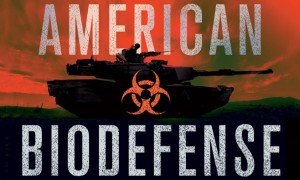American Biodefense: How Dangerous Ideas about Biological Weapons Shape National Security

The concept of national security dominates the public and private discourse in various countries, none more so than in the United States of America. A niche but prominent area of American national security is the concept of biodefence. Interestingly, despite a clear biological threat, the US military has neglected biodefence, while the post September 11 national security boon has witnessed the rise of civilian biodefence originating within the Department of Health and Human Services (HHS) and other civilian agencies. It is the examination of this oddity that forms the basis of Frank Smith III’s thesis in American Biodefense.
Based on Smith’s considerable expertise in biosecurity, American Biodefense tracks the development of biodefence from the American Revolutionary War to the 2003 Iraq War. Smith argues that the puzzling disparity between military and civilian biodefence is largely a consequence of organisational frames and stereotypes that exist within each sector. He characterises the organisational frame of the US military as biased towards a dominant kinetic frame (e.g. weaponry, ballistics, etc) at the expense of non-kinetic aspects (e.g. biological). This manifests as dismissive views on biodefence, characterisation of non-kinetic threats within general and non-distinctive acronyms and a doctrinal aversion to non-kinetic. Conversely, the HHS adopts a biomedical frame which emphasises research, surveillance, stockpiling and response which has resulted in a surge for civilian biodefence.
A key strength of American Biodefense is that Smith’s theory is compared with two popular theories that account for biodefence policy: realist (policy is responsive to a credible threat environment) and bureaucratic (policy support varies with the ebb and flow of turf competition by staunch advocates). While it is up to the critical reader to weigh the persuasiveness of the various theories, it is refreshing to see literature which challenges the conventional wisdom that surrounds American national security policy. Moreover, the organisational frames and stereotypes presented in this book provide an excellent alternative perspective to analyse the United States’ response to other national security related threats, for instance cybersecurity.
One cannot help but feel that this book would have benefited from an additional chapter examining the efficacy of American biodefence and whether an empirical relationship exists between the performance of biodefence and the organisational frames and stereotypes. Nevertheless, American Biodefense delivers on its title, providing a well-written and highly accessible analysis of military and civilian biodefence and how organisational behaviour, stereotypes and ideas have impacted on a critical element of American national security. This book is a welcome addition to national security literature and will undoubtedly be the inspiration for further studies on the shared assumptions and heuristics of organisations within the national security sphere.
Frank L Smith III, American Biodefense: How Dangerous Ideas about Biological Weapons Shape National Security, Cornell University Press, Ithaca, 2014.
Gayan Vithanage is a former intern at the AIIA National Office. This article can be republished with attribution under a Creative Commons Licence.





